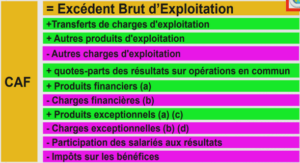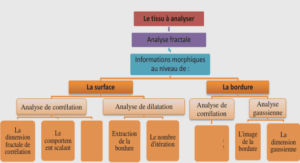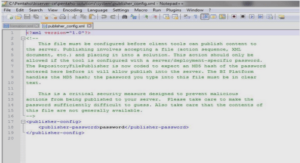An extension of the proportional hazards transform, tutoriel & guide de travaux pratiques en pdf.
Empirical applications to CAT bonds
Catastrophe (CAT) bonds are insurance-linked securities devised by insurers and reinsurers to shift natural disaster risks to the capital markets. 9 Several authors have proposed to price CAT bonds using the theory of contingent claim pricing for jump-diffusion processes (e.g., Vaugirard, 2003). These CAT bond pricing models usually involve extensive information that are not publicly disclosed (e.g., the trigger level or strike price). 10 It ensues that these types of models have yet to be tested empirically. In fact, most empirical studies on CAT bond spreads have instead relied on pure regression models (e.g., Bodoffand Gan , 2012; Braun, 2015). Meanwhile, explaining CAT bond spreads using distortion operators has been suggested by several works ; calibration of the Wang transform to CAT bond spreads is carried out, for instance, in Wang (2004) and in Galeotti et al. (2013). In this section, we employ our approach to perform further empirical tests on such models as it enables us to reformulate these in terms of the information available to the econometrician (e.g., the expected loss, the probability of first loss, the probability of last loss). Extending this stream of empirical studies, we make several interesting findings, in particular, it turns out that incorporating CAT risk and CAT risk-aversion into the distortion is important for explaining CAT bond spreads. This is established by calibrating a jump-diffusion distortion operator to market spreads. By way of a mixture of normal and exponential distributions, we also offer a simplified approximation of the latter distortion.
Setup
Let the payout to the ceding (re)insurer be contingent upon a risk X breaching a pre-agreed attachment point b, in which case the collateral is liquidated to reimburse the sponsor up to the par amount p paid by the investor at the issue date. If there is no triggering event during the term of the CAT bond, which is typically between one and four years, the principal is returned to the investor plus a coupon payment with spread S above the risk-free rate. Under the distortion premium principle, the spread is given by (from Galeotti et al., 2013)
If either of the probability of first loss PFL or the probability of last loss PLL is not available, the integral can be approximated using the rectangle method :
1 Zb b+p
F¯P(x)dx.
S ⇡ g(EL), EL ⌘ p (1.6.3)
A data set containing 508 CAT bond tranches issued between 1997 and 2016 has been made available to us by Artemis.bm. Roughly half of the CAT bonds in the sample cover the United States, approximatively one quarter are multi-territory, and the rest cover Europe, Japan or other areas. About half of the CAT tranches are multi-peril, and others are mainly wind-specific or earthquake-specific. For each of the 508 transactions, the available information includes the per annum spread S and expected loss EL. The probability of first loss PFL and the probability of last loss PLL are however available only for 284 transactions. Calibration is therefore carried out under the rectangle method (1.6.3), by minimizing the sum of squared pricing errors. Fitting adequacy is investigated using nonparametric regressions to detect systematic pricing errors ; see Azzalini et al. (1989), Zheng (1996), and Li and Racine (2007) for works on nonparametric specification testing.
Pricing CAT bonds using a jump-diffusion distortion
An interesting property of our distortion operators is that they inherit the features of the original root model they are derived from. For instance, the jump-diffusion distortion (1.4.16) can incorporate jump risk, making it an interesting candidate for pricing CAT bonds. Several frameworks based on jump-diffusion processes have in fact been proposed to price such insurance-linked securities (e.g., Vaugirard, 2003). In this section, instead of using the Wang transform as in Wang (2004) and Galeotti et al. (2013), we calibrate our jump-diffusion distortion to CAT bond spreads. Furthermore, we investigate whether jump risk is priced by the market.
Suppose the jumps are used to model natural disasters. Because such events can only lower the aggregate endowment, we are interested in the special case p = 0 and < 0 of the model presented in Section 1.4.2, where the jump-diffusion process S is used here to represent a catastrophe loss index whose dynamics is affected by positive jumps. For this special case, it is a straightforward exercise to show that the distortion operator (1.4.16) can be simplified and rewritten as follows : g’,,⌘,⌫ (u) ⌘ ⌥, ⌫ ⇣⌥,−⌘ (u) + ‘⌘ , (1.6.4)
Definition 1.6.1. Let {Yi}i≥1 be a sequence of i.i.d. exponential random variables with rate ⌘ > 0, P be a Poisson random variable with rate > 0, and Z be a standard normal random variable. We define the following CDF : ⌥,⌘ (x) ⌘ Pr Z P Yi x!, x 2 R. (1.6.5)
Xi =1
We calibrate the distortion depicted by (1.6.4) using our CAT bond tranches data set. It turns out that there is an infinite set of solutions that yield the same fitted curve. For example, the solution (‘ˆ, ,ˆ ⌘ˆ, ⌫ˆ) = (0.02, 0.20, 4.50, 2.92) provides the same distortion as (0.11, 0.23, 2.00, 1.87). We are also interested in determining whether jump risk is priced by the market. We seek an answer to this research question by calibrating the distortion operator under the constraint ⌫ = 1, which states that the jump amplitude and frequency are unchanged under the risk-neutral measure, i.e., that jump risk is not priced by the market. The calibration results are exhibited in Figure 1.1, where we can see that assuming idiosyncratic (i.e., unpriced) jump risk leads to a mis-specified model. This provides, for the first time, interesting evidence that jump-diffusion models are appropriate for pricing CAT bonds, but that investors are risk-averse to natural disasters. We defer to future work for delving further into this question.
Results for other distortions
One potential disadvantage of the jump-diffusion distortion is the use of sophisticated analytical results on the Hh special function from mathematical physics in order to compute it efficiently (see, e.g., Kou, 2002, Appendix B). Hence, it would be interesting to find a readily implementable distortion that also fits well to CAT bond spreads.
Results for calibrating the GB2 distortion (1.5.10) to CAT bond market spreads are exhibited in Figure 1.2. Graph 1.2(b) reveals systematic pricing errors, exacerbated at small values of the expected loss EL. Unreported tests available upon request from the authors show that other distortion operators suffer from similar issues ; such as the two NIG distortions and also Wang (2004)’s distortion based on the Student-t distribution. Hence, such distortions are less suitable for explaining CAT bond spreads. This might appear surprising as the GB2 family is known for its flexibility in modeling insurance losses (Cummins et al., 1990). On the other hand, the theoretical literature on CAT bonds and other insurance-linked securities advocate jump-diffusion processes and compound Poisson processes to model catastrophe loss processes. 12 In the previous sections, we have presented empirical evidence supporting the latter models. The inadequacy of the above distortion functions for explaining CAT bond spreads may therefore be attributed to their inability in capturing and pricing catastrophe risks, in contrast with the jump-diffusion distortion which performs well. Next, we present a general framework addressing this issue.
A simple class of distortion operators to price CAT bonds
This section offers a simple class of Esscher-type distortions based on a mixture of distribu-tions to characterize catastrophe risks. It is shown such distortions can provide an accurate representation of CAT bond spreads while being straightforward to implement in practice.
General framework
Let X be a continuous random variable on a probability space (⌦, F, P) representing a risk. A probability mixture distribution having the following representation is considered : X = eµ+Z I , (1.6.6)
where µ 2 R and > 0 are constants, I is a discrete random variable such that
P(I = i) = pi, i 2 {1, . . . , m}, Xi (1.6.7)
pi = 1,
and the Z1, . . . , Zm are independent random variables with PDFs denoted by f1, . . . , fm. Hence,
X Fi(z) ⌘ Z−1 fi(x)dx,z 2 R, (1.6.8)
P(ZI z) = i=1 piFi(z),
as I is presumed independent from the Z1, . . . , Zm. Here, m 1 is a given constant denoting the number of components in the probability mixture. Such a model can account for a hidden multi-state risk structure and is therefore deemed appropriate for catastrophe-linked risks.
The following notation will be used for the moment generating functions :
⇣i(t) ⌘ EP⇥etZi ⇤, i 2 {1, . . . , m}, t 2 R. (1.6.9)
The Esscher risk-neutral measure Q is considered as it is a common choice in the literature (e.g., Gerber and Shiu, 1994). The Radon-Nikodym derivative associated to this measure is dQ Xa eaZ I (1.6.10) = = , dP EP[eaZ EP[Xa] I ]
where a 2 R is a constant. The distribution of ZI under Q is stated in the following proposition proven in Appendix 1.A.5.
The distortion operator g that applies the Esscher change of measure for the risk X, i.e., such that g P(X > x) = Q(X > x) for all x 2 R, is given in the proposition below whose proof is a direct application of Corollary 1.3.1.






